
3 new MyHome innovations driving value for estate agents
18 Sept 2025Our latest MyHome features give 4.8 million homeowners even more reason to return to Zoopla and choose our estate agent partners.
Read more
Budget uncertainty has triggered the usual festive slowdown 6 to 8 weeks ahead of schedule, resulting in the first annual drop in sales agreed in two years and a 7% boost in available homes for sale.

Uncertainty around the Autumn Budget has brought forward the usual Christmas slowdown for early stage buyers
Key market measures have dropped including buyer demand (-8%) and agreed sales (-3%) as stock levels build (+7%) against last year
Higher-value markets are seeing the most pronounced drop in activity, alongside the South of England and Wales on a regional basis
House price inflation is at +1.3%, broadly in line with 2024 but with a growing divide between southern and northern regions
Time to sell has stretched to 37 days, with homes taking 10% longer to shift than a year ago
Sale volumes in 2025 sit close to the 10-year average with this year recording 5% more sales than 2024
Uncertainty around what the Autumn Budget holds for the housing market has brought forward the usual Christmas slowdown by 6 to 8 weeks as movers adopt a ‘wait and see’ approach.
Key market measures have recorded a dip this month and new buyers are hesitant to enter the market, shown in an 8% drop in demand against a year ago. The number of new agreed sales has fallen 3% against last year, the first annual fall since October 2023. Meanwhile, stock levels are building for estate agents with 7% more homes currently for sale than a year ago.
Download the Zoopla House Price Index - October 2025 (PDF, 350.21kB).
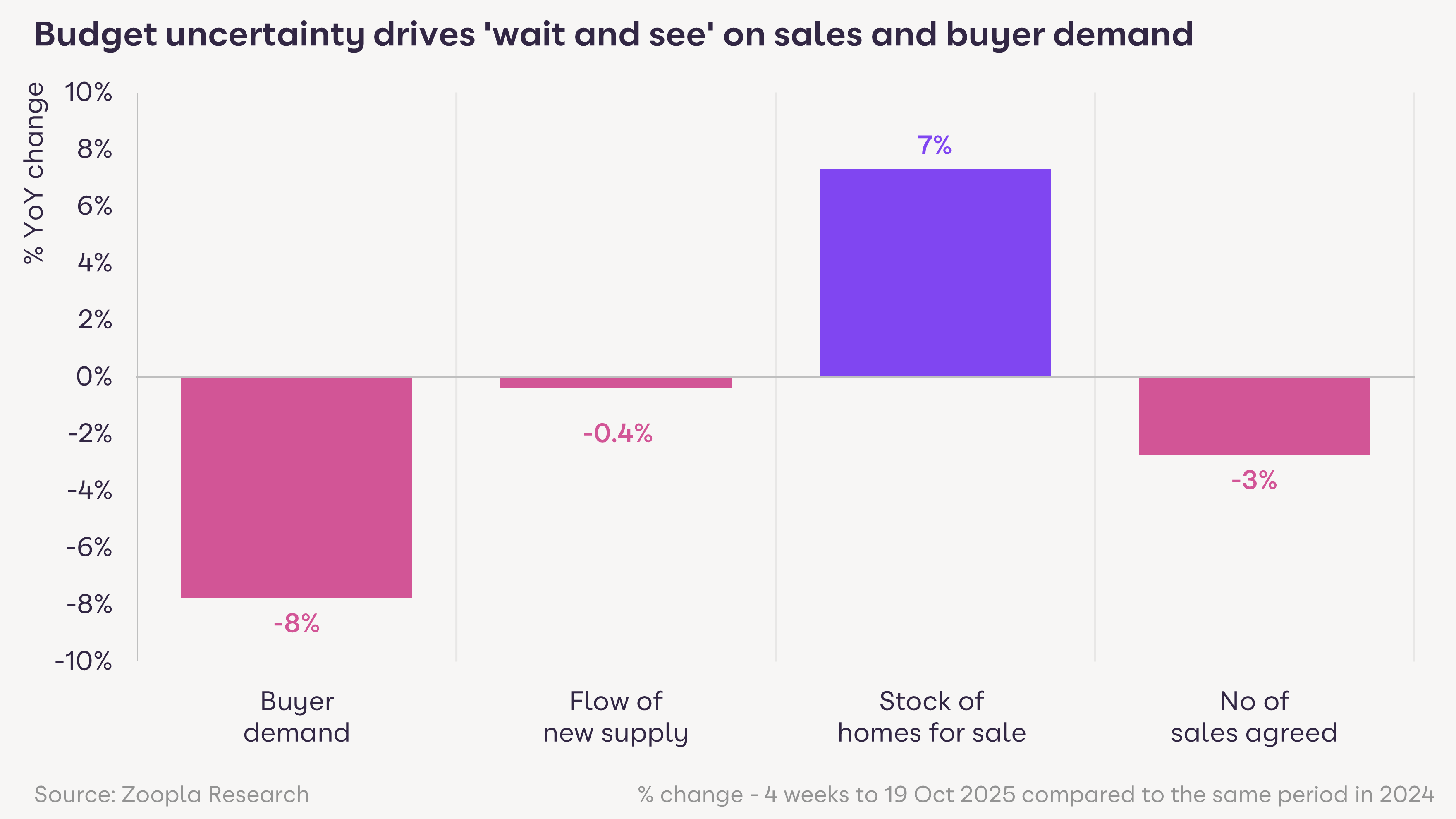
Now is the time for sales agents to increase the focus on ways to maintain the current sales pipeline, trying to secure serious buyers for the most saleable homes.
While the current sales pipeline is the largest for four years, new movers are likely to step back until after the Budget with the £500k+ premium market is particularly slow. With the average agent now holding 36 homes for sale (8% more than last year) and sale times stretching to 37 days, the core focus must be to engage serious sellers and new prospects on the need to market homes at a realistic prices to heighten interest and actively engage buyers, particularly in regions with more stretched affordability.
It’s vital to remain present for the clients currently progressing through to completion to drive retention and referrals, while also nurturing the clients on your books who are not actively transacting. The 5-year and 17-year selling windows become even more crucial in a buyers’ market, highlighting key opportunities to reconnect with clients reaching key life milestones. It’s also vital to encourage a move away from any mindset around timing the market, which the industry benefited from over the last 5 years. Strong local insights, tailored advice and trusted valuation services can ensure that you are the clear choice for instruction when clients hit those major selling windows.
Every 1.5 seconds a mover connects with an estate agent or housebuilder on Zoopla. See how your business can win with us.

While Budget uncertainty is impacting all corners of the market, the South of England and Wales are seeing the most pronounced drop in activity. At the same time, sales, listings and buyer demand are all lowest for homes priced over £500,000.
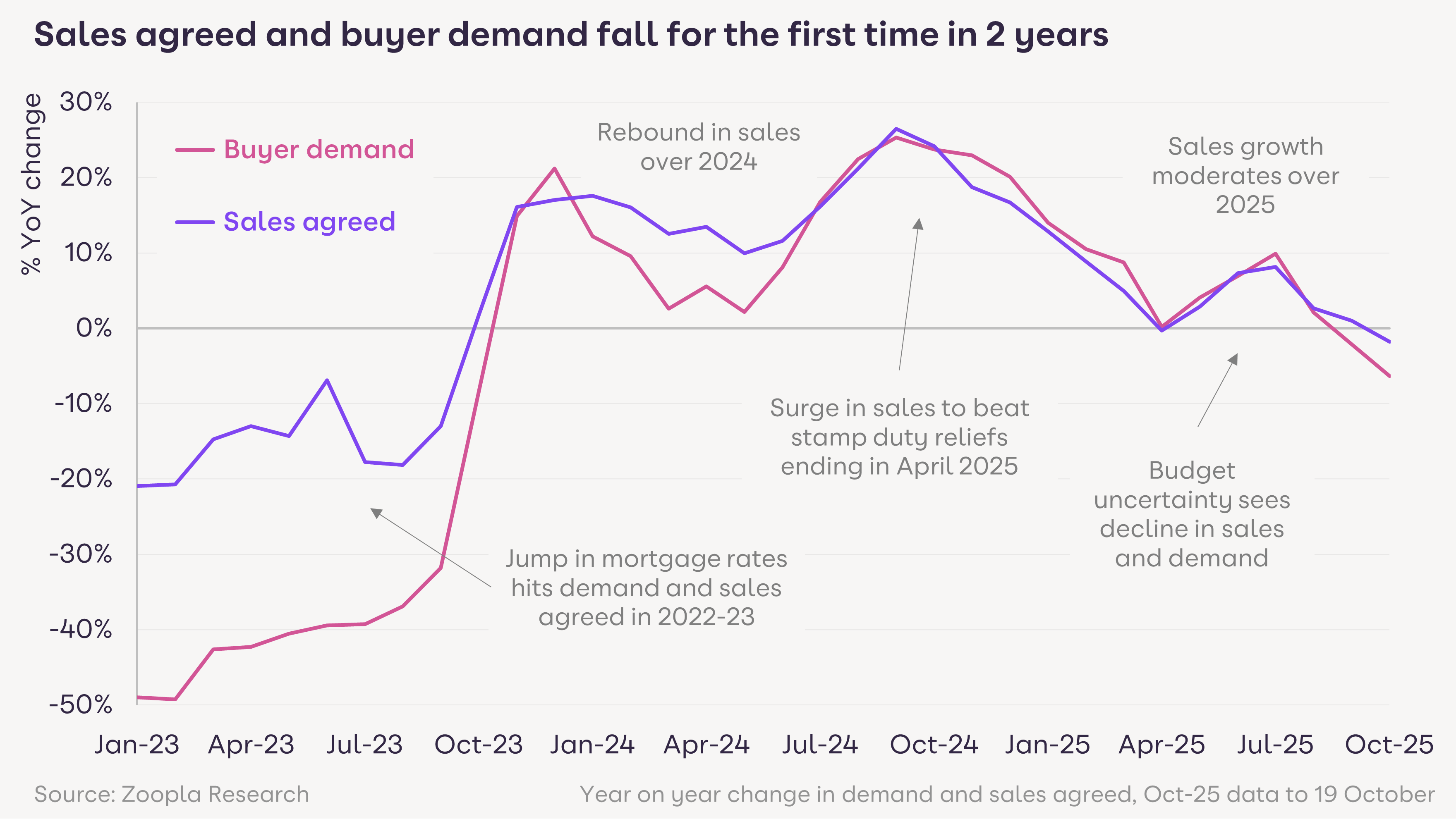
This is a direct impact of speculations around property tax reform in the Autumn Budget, and the disproportionate impact changes such as higher council tax, changes to stamp duty and new capital gains tax policy would have on the mid to top end of the market.
Agreed sales in the last four weeks are down in Wales (-9%), the South East (-8%), the East of England (-6%) and London (-5). However, committed buyers in more affordable markets are pushing ahead before the year end. There has been more sales agreed in Scotland (+3%), Yorkshire & the Humber (+4%), the South West (+1%), and the West Midlands (+1%) over the last four weeks when compared with last year.
National house price inflation has slowed over 2025 and currently stands at +1.3%, broadly in line with a year ago.
There’s a growing divide in house price growth, with inflation coming to a standstill across the south amidst affordability pressures and weaker demand. Prices are rising by more than 2% across Scotland, Wales and northern regions of England, broadly in line with last year.
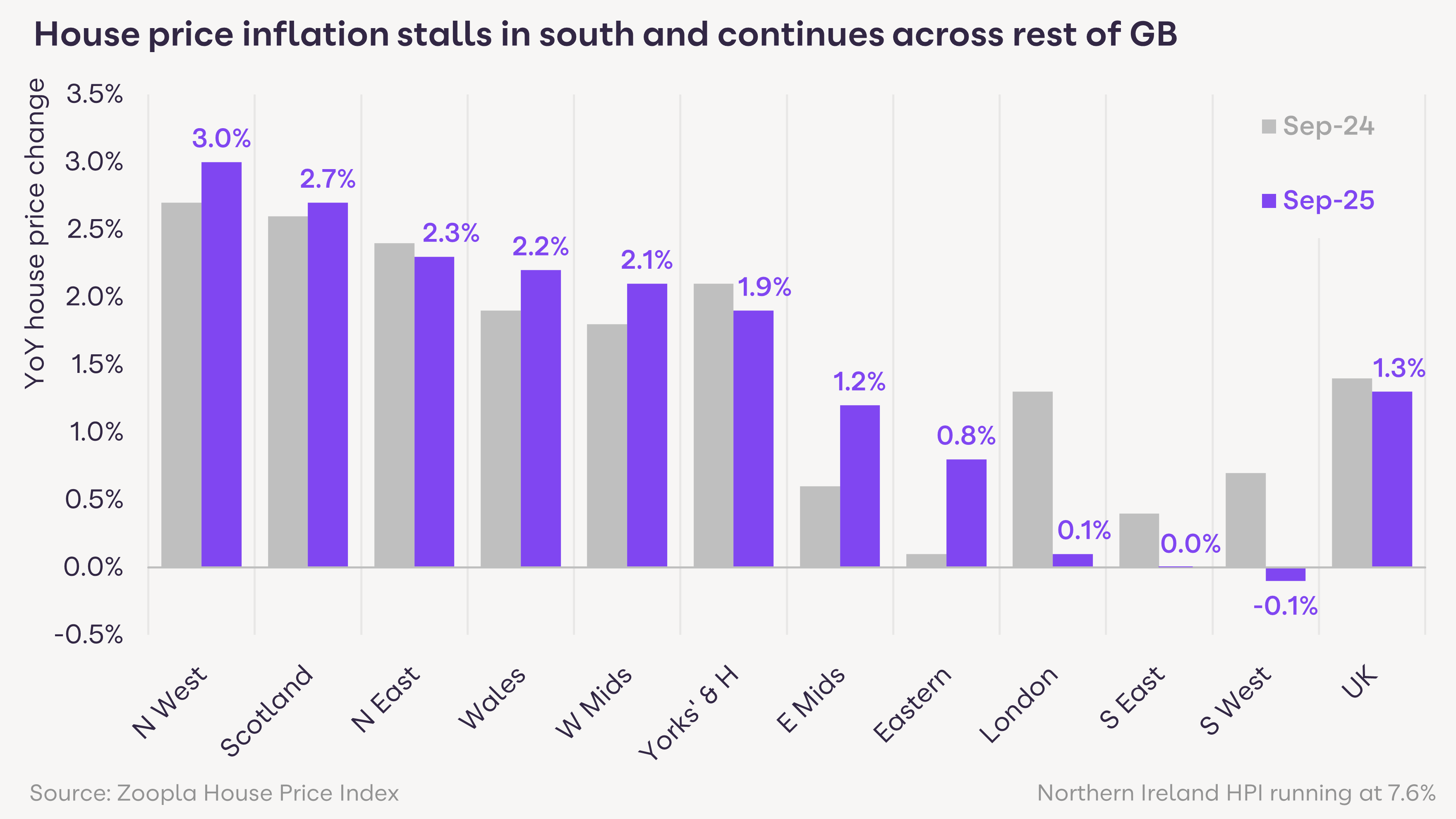
The average time to sell a home is now 37 days, around 10% slower than a year ago.
It takes longer to move stock across southern England, reaching an average of 45 days in London (20% slower than last year). The fastest sales continue to be seen in Northern England and Scotland, in line with stronger buyer demand.
Homes requiring price reductions take even longer to sell, underlining the importance of realistic pricing in today’s market.
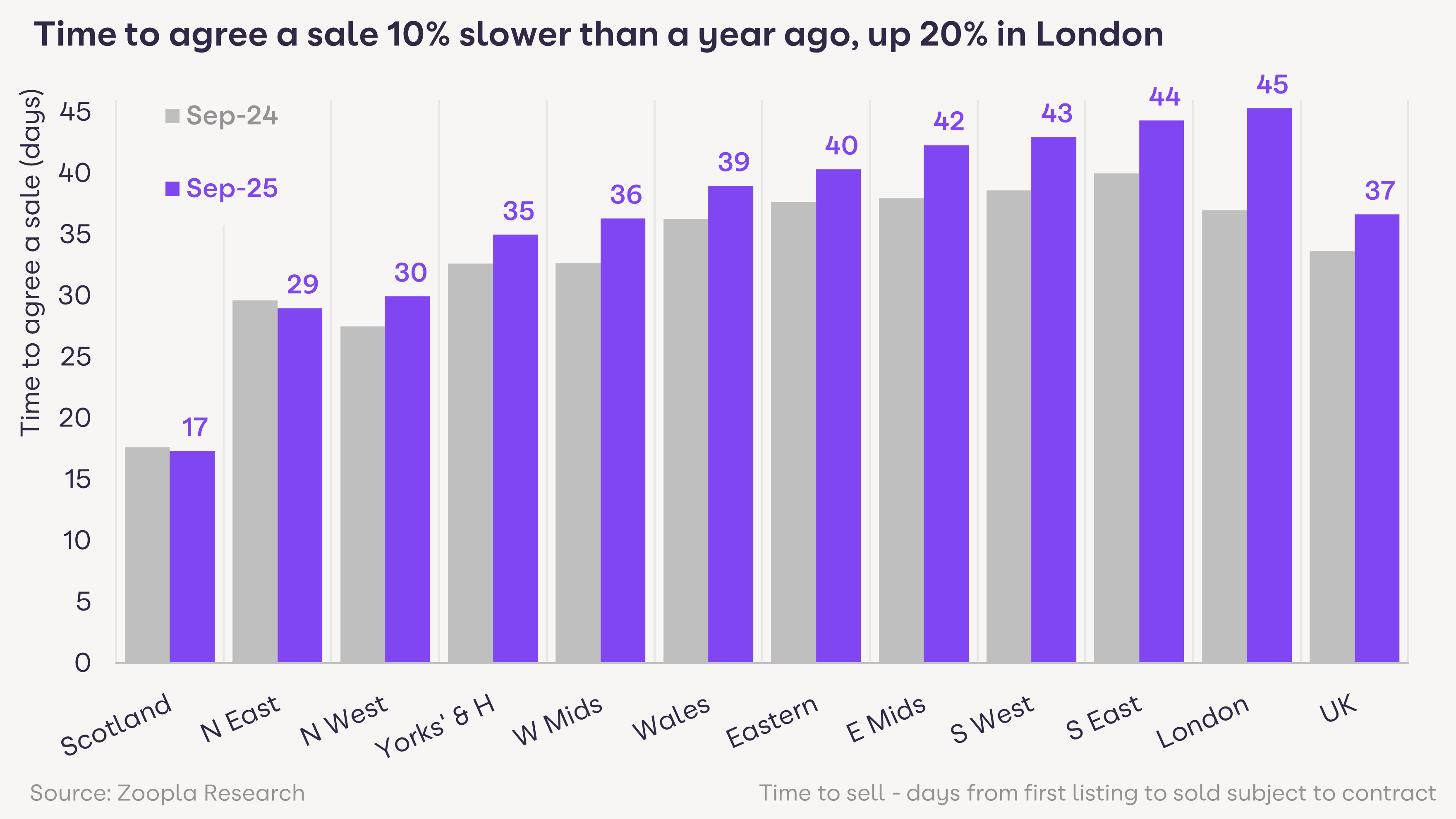
It’s worth noting that the sustained increase in sales activity over the last two years has created the largest pipeline of agreed sales working their way through to completion.
There are almost 350,000 homes, worth more than £100bn, working their way to completion over the next 5 to 6 months. This is the largest sales pipeline in more than 4 years, since May 2021 when the pandemic boom was in full swing.
The housing market has made a strong recovery over the past two years, with sales volumes now close to the 10-year average of 1.2 million transactions a year.
However, the wider economic backdrop is not strong enough to drive further growth in sales volumes in the near term. We expect the number of sales agreed to stabilise at current levels, with continued demand for well-priced homes.
House price inflation is forecast to end the year at 1-1.5%, with prices under pressure across southern England, where affordability is most stretched and stamp duty costs are highest.
The removal of stamp duty at the Budget, the subject of ongoing media speculation, would provide a major boost to activity and support economic growth. However, homebuyers are cautious about what new taxes might replace it.
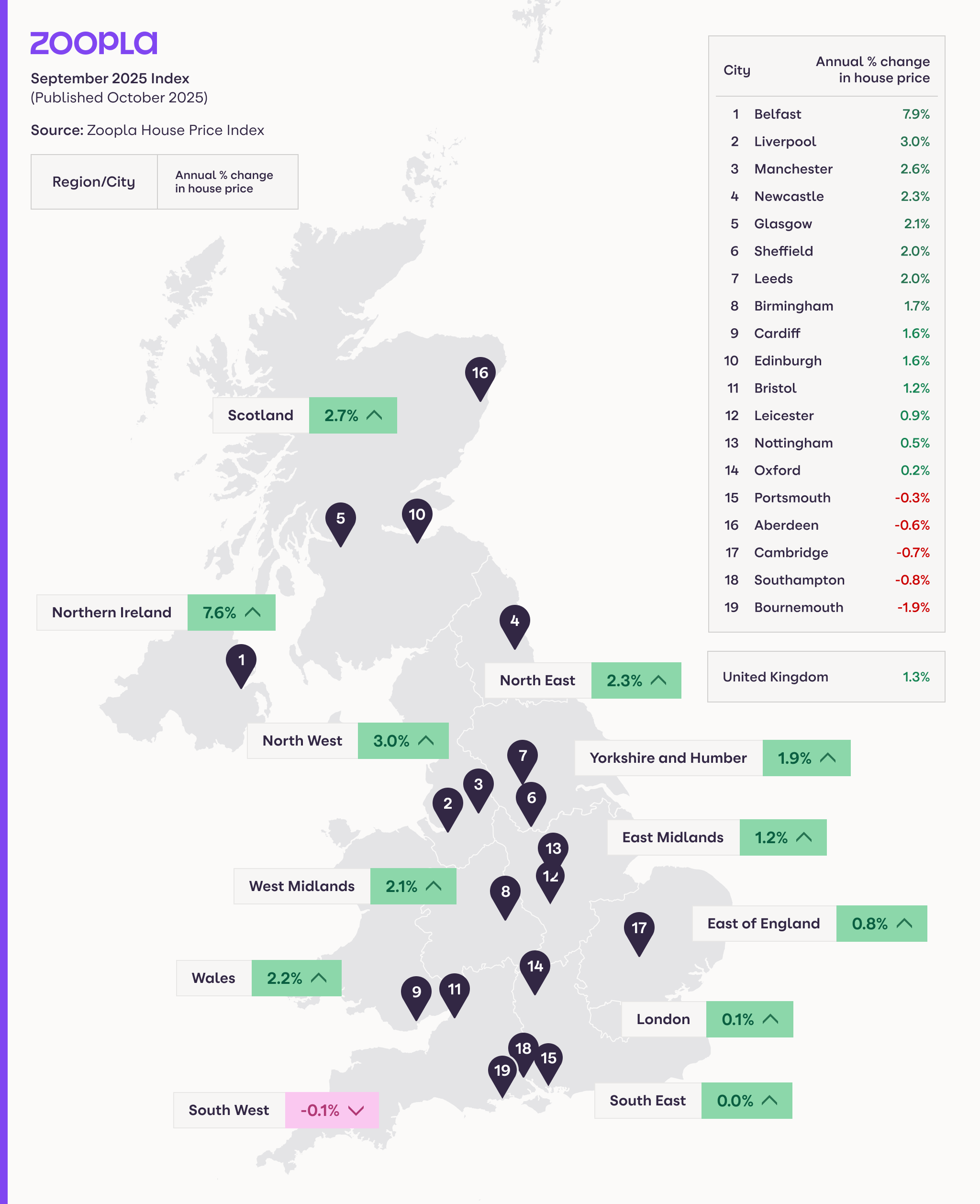
Discover our powerful agent tools, designed to help you boost brand visibility and attract more business.

The Zoopla House Price Index (HPI) tracks the change in achieved sale price of homes - not asking prices. The index uses sold prices, mortgage valuations and data for recently agreed sales, with more input data than any other index. The methodology is designed to accurately track the change in pricing for UK housing. It’s a revisionary index and non-seasonally adjusted.
Additional notes on this month’s data:
Buyer demand, sales agreed and number of homes for sale compare the four weeks to 19 October 2025 vs same period in 2024
Time to sell is from a property first listed for sale to the sale being agreed (sold subject to contract) - not completion, which takes a further 5 to 6 months on average.
The sales market in Scotland operates differently - homes are marketed with a survey - and the time to sell is faster than England and Wales.
Past House Price Index reports

We try to make sure that the information here is accurate at the time of publishing. But the property market moves fast and some information may now be out of date. Zoopla accepts no responsibility or liability for any decisions you make based on the information provided.

Our latest MyHome features give 4.8 million homeowners even more reason to return to Zoopla and choose our estate agent partners.
Read more
Our latest innovations are designed to maximise conversion from high-intent property searchers, directly driving value for our partners.
Read more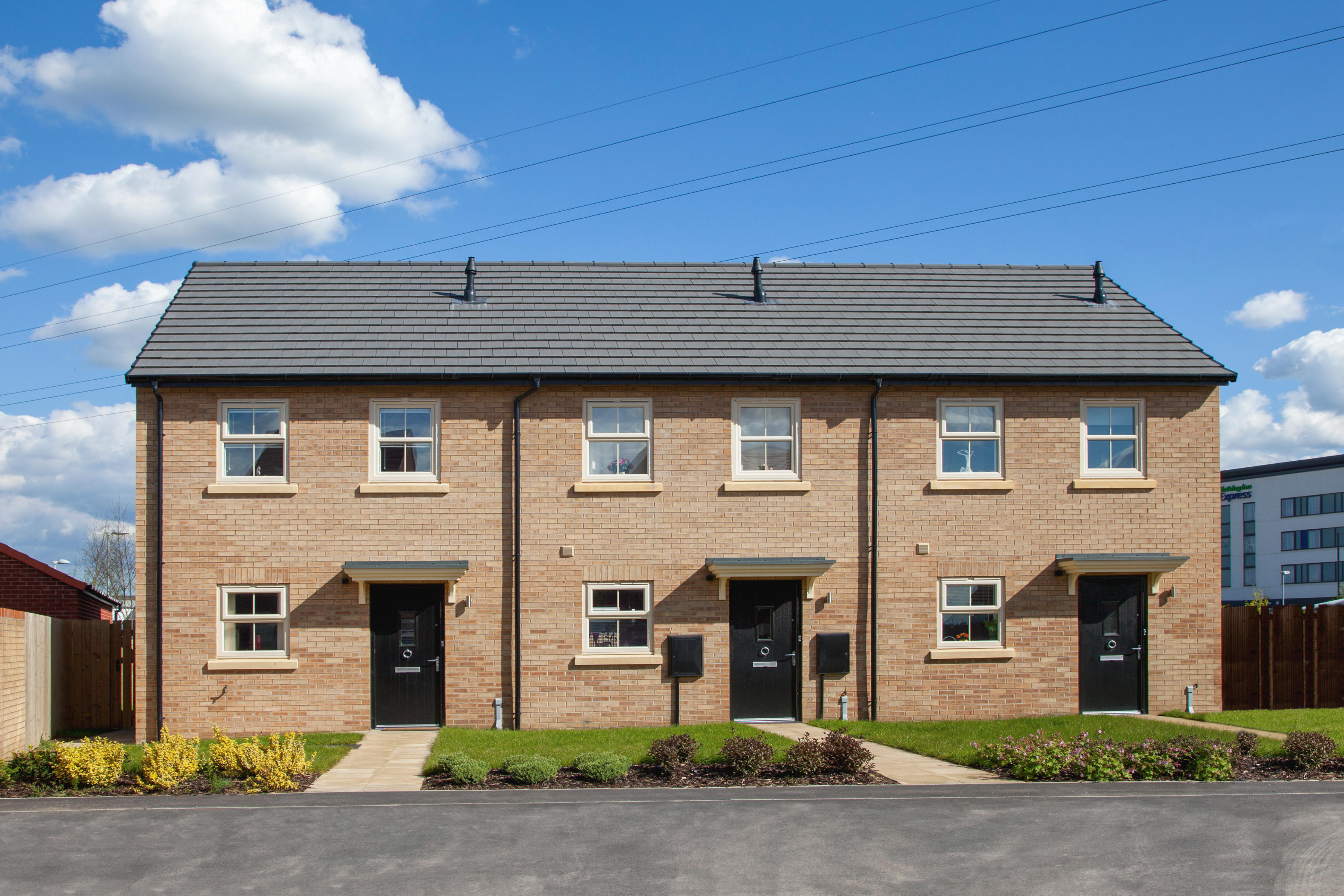
Our Viability of Homebuilding Report reveals that building homes is not currently financially viable across 48% of the country, leading to four key reform recommendations that will support the new homes industry to increase housing delivery and build more homes.
Read more